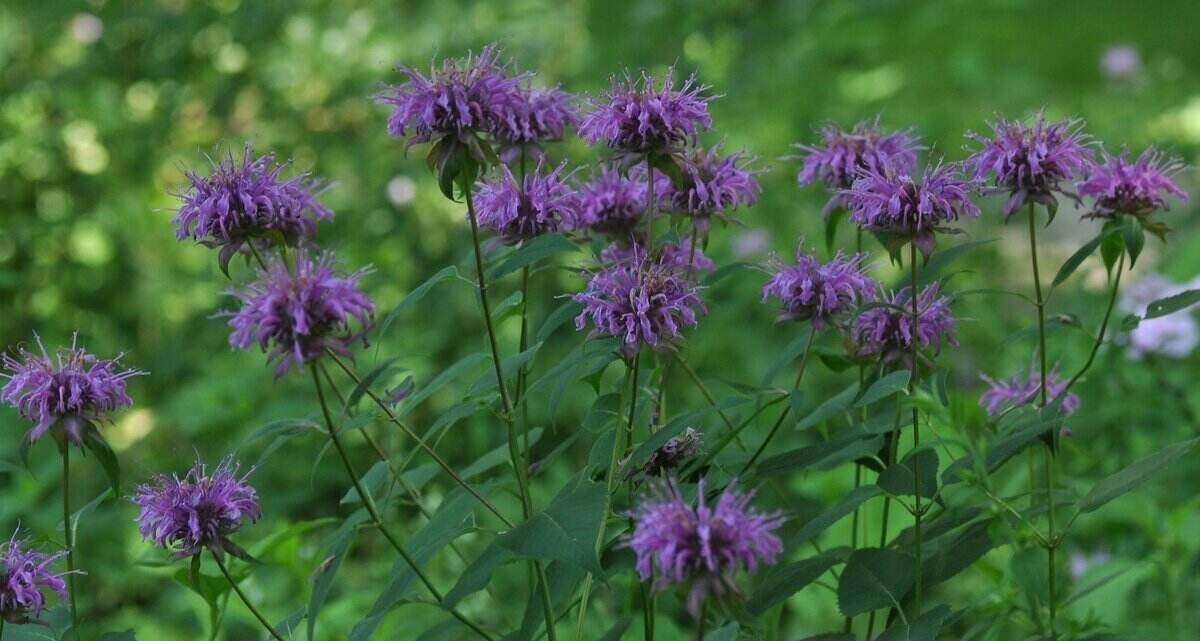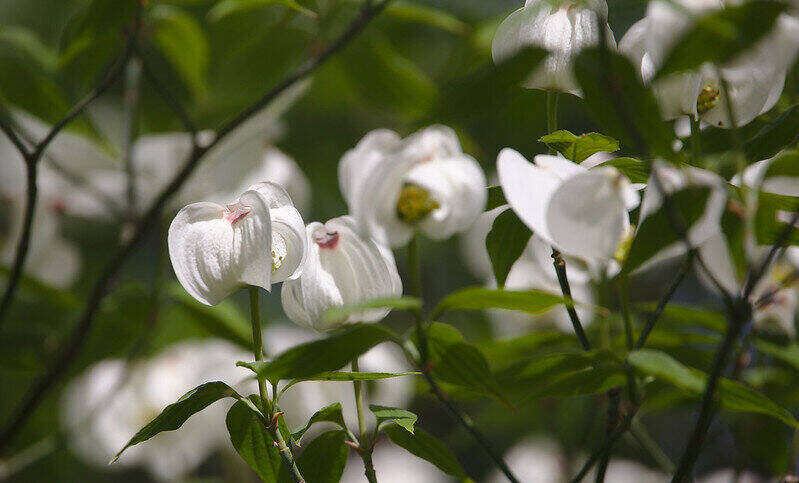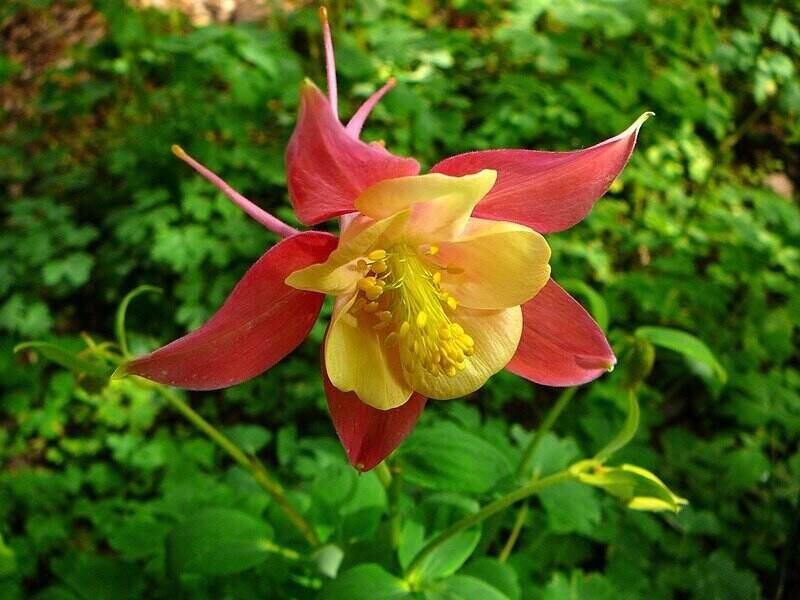
Getting a gorgeous garden in Charm City doesn’t have to take a lot of time. If you rely on native plants you will get independent species that are also eye-catching and self-sufficient.
Advantages of Baltimore native plants:
- Drought resistant: Native plants don’t need frequent watering.
- Habitat helpers: People aren’t the only ones who like native plants. Local wildlife and pollinators like birds and butterflies rely on these species to give them food and shelter.
- Pollution reducers: Native plants are native for a reason – they like it here. It’s easier for them to survive in the local climate so you won’t need a ton of fertilizers and pesticides to get them to grow. This means less chemicals running into the Chesapeake Bay watershed.
How to choose native plants for your Baltimore yard:
Maryland’s largest city is in a humid subtropical zone, which means you get four seasons with long, hot summers and cool winters. This makes it ideal for a large variety of plants but by the time the heat peaks in July, you’re ready for a breeze off the Chesapeake Bay.
When researching native plants, look for species suitable for Baltimore’s U.S. Department of Agriculture hardiness zones 7b to 8a — where the lowest temperatures can be a frosty 5 to 10 degrees.
We’ve listed 14 of the best native plants for Baltimore to give you a little inspiration, but there are many others that make great garden additions.
1. Smooth blue aster (symphyotrichum laeve)

The smooth blue aster is a great fall-blooming wildflower. When other plants are calling it quits late summer, the aster is just getting started. Its soft lavender-blue flowers burst into bloom around August and they linger into October. The daisy-like petals add fall color and an air of whimsy and delight to your landscape.
There are over 180 different varieties of asters, so they’re easy to find at local native plant nurseries. They’re simple to grow but on occasion, they can be affected by root rot or blight. Simple fixes, like planting in well-drained soil or careful watering, helps to avoid these diseases.
Bees and butterflies love the aster, making it a perfect addition to a wildflower or rock garden.
- Plant type: Wildflower
- Hardiness zones: 3-8
- Sun: Full sun, partial shade
- Water needs: Low to medium
- Soil: Clay, loamy, sandy
- Duration: Perennial
- Mature height: 1-3 feet
2. Blue-stemmed goldenrod (solidago caesia)

This shade-friendly perennial gets its name from its wiry, blueish-purple stems. Bright yellow plumes of golden flowers appear in late summer to fall, adding a burst of color that attracts pollinators. This plant doesn’t need a lot of sun or water – making it the ideal addition to a low-maintenance garden.
Blue-stemmed goldenrod does like to be planted in groupings, so you’ll need to plant a few at a time. The leaves remain green throughout the season, so it provides year-round interest.
The goldenrod is beloved by butterflies but deer resistant.
- Plant type: Wildflower
- Hardiness zones: 3a-9b
- Sun: Full sun, partial sun, shade
- Water needs: Low
- Soil: Clay, Loamy, well-drained
- Duration: Perennial
- Mature height: 1-3.5 feet
3. Cardinal flower (lobelia cardinalis)

The cardinal flower gets its name from the scarlet red petals that resemble a Roman Catholic cardinal’s robe. Its bright color attracts the typical pollinator crowd – birds, butterflies, and hummingbirds – so your garden will provide a front-row seat for viewing the tiny winged visitors.
Another benefit to the cardinal flower is that it has a long bloom time, with its crimson spiked flowers lasting from July through September. The downside is that you’ll need to reseed them the following year, and it does require more water than many of the other area native plants.
- Plant type: Wildflower
- Hardiness zones: 3-10
- Sun: Full sun, partial shade
- Water needs: High
- Soil: Clay, loamy, moist
- Duration: Biennial
- Mature height: 2-4 feet
4. Cinnamon fern (osmundastrum cinnamomeum)

The cinnamon fern gets its name from its rusty Old Bay-colored fronds that grow in the center of the plant and look like little cinnamon sticks. They’re contrasted by larger, green fronds, making this plant an interesting addition to your garden.
As everyone knows, ferns tend to be the least likely to be killed off by a novice plant owner, and the cinnamon fern is no exception, as long as it’s planted in the right location. It grows well in shade and prefers soggier spots. If you’re making a rain garden or conservation garden, the cinnamon fern would be a great addition.
- Plant type: Fern
- Hardiness zones: 5-9
- Sun: Full sun, partial sun, shade
- Water needs: High
- Soil: Clay, loamy, moist, rich, humusy, acidic
- Duration: Perennial
- Mature height: 2-5 feet
5. Bergamot (monarda fistulosa)
The best garden isn’t only attractive to the eyes, it’s also attractive to the nose. That’s where the shaggy petalled bergamot comes to the rescue with its fresh minty fragrance. It’s a member of the mint family but the scent also has been compared to everything from oregano to thyme. If you want to sniff some for yourself, grab a leaf, crush it in your hand and inhale. The leaves are commonly used to make teas, and the flowers are often found in dried floral arrangements.
No wonder bees love it. Also known as wild bee balm, the lavender blooms bring a cheery pop of color to a rain garden, butterfly garden, or wildlife garden because they attract pollinators like bees, butterflies, and hummingbirds.
- Plant type: Flower
- Hardiness zones: 4-10
- Sun: Full sun, partial sun
- Water needs: Low to medium
- Soil: Clay, loamy
- Duration: Perennial
- Mature height: 1.5-5 feet
6. Blue sedge (carex glaucodea)

Blue sedges are blue-green grassy plants that are drought tolerant and low maintenance. They’ll add texture to your garden and they’re great for borders, rock gardens, or around ponds and streams.
They form clumps so they make an excellent ground cover and thrive when planted in groups. Sedges can even be mowed and used as turf but unlike traditional turf grass, they don’t get weedy.
Like many native plants, sedges attract birds and butterflies so they’ll keep your garden buzzing from May to late summer when flowers are blooming. It’s an attractive evergreen, so it will provide winter interest for your garden.
- Plant type: Ground cover
- Hardiness zones: 4a
- Sun: Partial sun, shade
- Water needs: Medium
- Soil: Dry, moist
- Duration: Perennial
- Mature height: 1-1.5 feet
7. Butterfly milkweed (asclepias tuberosa)

As you can probably guess by the name, the butterfly milkweed is a favorite of butterflies. The intricate clusters of orange blooms that burst to life in the summer draw butterflies like the monarch in addition to pollinating insects who see it as a happy home.
Butterfly milkweed blooms last for months, cheering up your garden from May through September. And it’s pretty self-sufficient. The butterfly weed thrives in sunny, dry soil, so it doesn’t need watering. It can be spotted throughout Maryland including the coastal, mountain, and piedmont areas.
- Plant type: Wildflower
- Hardiness zones: 3-9
- Sun: Full sun, partial sun
- Water needs: Low to medium
- Soil: Loamy, sandy, well-drained
- Duration: Perennial
- Mature height: 1-3 feet
8. Southern arrowwood (viburnum dentatum)

Southern arrowwood plants are popular because they’re easy to grow. They’re rugged, adaptable, and resilient. They work great for a garden or hedge, and they’re not picky about soil quality. What’s not to love?
The arrowwood’s white flat-topped flowers appear in spring, followed by blue berries that are attractive to a variety of birds. They do attract beetles, but they can be kept at bay with a little horticultural oil.
- Plant type: Shrub
- Hardiness zones: 2-8
- Sun: Full sun, partial sun, shade
- Water needs: Medium
- Soil: Loamy, sandy
- Duration: Perennial
- Mature height: 10-15 feet
9. Orange coneflower (rudbeckia fulgida)
The orange coneflower, also known as a black-eyed Susan, is Maryland’s state flower. It looks like it leaped from wallpaper in a 1960s brick ranch house. Its bold yellow-orange petals and black globular cone exude a vintage feel that will brighten even the most overcast day.
It’s a popular meeting place for butterflies and birds who are attracted to the nectar and seeds when it blooms from July to September.
It’s also a great plant for erosion control if you’ve got a bank that doesn’t want to stay put. On the flip side, it’s also a super spreader, so you might want to curtail it if it starts growing out of control.
- Plant type: Flower
- Hardiness zones: 4-9
- Sun: Full sun, partial sun
- Water needs: High
- Soil: Clay, loamy, sandy
- Duration: Perennial
- Mature height: 1.5-10 feet
10. Turtlehead (chelone glabra)

The turtlehead gets its name from the perky white flowers that resemble the head of a turtle. The blooms have soft pale pink tones that peak from late summer to mid-fall. They might be mistaken for snapdragons, a former cousin.
If you want your garden to be a hotspot for bees, hummingbirds, and butterflies, the turtlehead is a great pick. The Baltimore checkerspot butterfly is a big fan and will enjoy visiting this plant. Turtlehead cuttings can make a pretty arrangement for a vase indoors.
The turtlehead plant was used for medicinal purposes by early American Indian tribes. The list of ailments it has been said to cure includes jaundice, malaria, fever, and yikes – worms.
- Plant type: Wildflower
- Hardiness zones: 3-8
- Sun: Full sun, partial sun
- Water needs: High
- Soil: Clay, loamy, sandy, rich, moist
- Duration: Perennial
- Mature height: 1.5-6.5 feet
11. Eastern redbud (cercis canadensis)

This popular deciduous tree will brighten your yard with spectacular spring blooms of pink and purple that last for two to three weeks. In the fall, its heart-shaped leaves turn yellow and continue adding continuous color to the landscape.
A cool feature of this tree is that it isn’t bothered by soil types or pH, making it the perfect tree for an urban garden where pollution is higher.
Although the Eastern redbud is considered low maintenance, it is, unfortunately, susceptible to fungal diseases and pests. However, with the right care, it can be the perfect accent to your yard and provide a shady spot for many years to come. The Eastern redbud can grow to be about 30 feet tall at maturity, with a spread of 20 to 35 feet.
- Plant type: Tree
- Hardiness zones: 4-8
- Sun: Partial sun, shade
- Water needs: Dry
- Soil: Dry, moist
- Duration: Perennial
- Mature height: 20-35 feet
12. Culver’s root (veronicastrum virginicum)
Culver’s root is a low-maintenance plant that is a great addition to a butterfly garden. Insects like the butterfly and bees find the spikes of white to pale blue flowers particularly attractive when they appear from late summer to mid-fall.
If you’re also looking for something to brighten up your indoor space, this plant’s elegant flowers make nice arrangements because they’re long and sturdy. Since they grow so tall, consider placing them in the back of your garden so it doesn’t block shorter plants and adds some depth.
- Plant type: Flower
- Hardiness zones: 3-8
- Sun: Full sun, partial sun
- Water needs: High-medium
- Soil: Clay, loamy, sandy
- Duration: Perennial
- Mature height: 3-6.5 feet
13. Flowering dogwood (cornus florida)

The flowering dogwood might be Virginia’s state tree but it’s also a native tree to the state’s northern neighbor. It’s well recognized for its large white flowers that bloom from April to May. Flowers mature into dark blue berries that are tasty treats for birds. In the fall, emerald green leaves turn burgundy, making the dogwood an attractive year-round garden choice.
These trees perform best in partial sun and they’re fairly low maintenance, but they are susceptible to several insects and diseases, such as dogwood anthracnose and powdery mildew.
- Plant type: Tree
- Hardiness zones: 5-8
- Sun: Partial sun
- Water needs: Medium
- Soil: Loamy, acidic, well-drained
- Duration: Perennial
- Mature height: 20-30 feet
14. Wild red columbine (aquilegia canadensis)
The wild red columbine stands out from other flowering plants with its bell-shaped blooms of red and yellow that appear early in April.
The herbaceous red columbine is easy to grow. Almost too easy. It is known to self-seed, or self-pollinate, so it spreads faster than gossip. This is also one reason why it doubles as an excellent ground cover.
Hummingbirds and bees love this plant so you’ll be helping your local ecosystem by choosing this beauty for your garden over nonnative plants. And if you’re desperate for a date, you can always try a trick used by Native American men. They crushed wild columbine seeds to make love charms. Please let us know if it works.
- Plant type: Flower
- Hardiness zones: 3-8
- Sun: Full sun, partial shade
- Water needs: Medium
- Soil: Loamy
- Duration: Perennial
- Mature height: 2-3 feet
Why native plants make gardening easier
Let’s face it – everyone is busy these days. Between long hours at work and more family obligations, a needy plant is the last thing we want to deal with.
That’s where native plants can save the day. They erase the guesswork and make sustenance a no-brainer. These plants thrive in less friendly climates, they don’t need babying with a watering can (or worder-ing if you’re a native), and they could care less if it’s always sunny in Baltimore. So pick out a few of the native plants on this list. They’re the ideal match for our hectic lives, and they’ll forgive us when we have to abandon them for an Orioles season.
You can find a more comprehensive list of Baltimore’s native plants on the Maryland Native Plant Society’s website or use the search feature on the Chesapeake Bay Native Plant Center’s website.
You might also consider working with a local landscaping professional to design your landscape and choose the best native plants for your yard’s soil and sun conditions.
Main Photo Credit: Ted | Flickr | CC BY-SA 2.0



